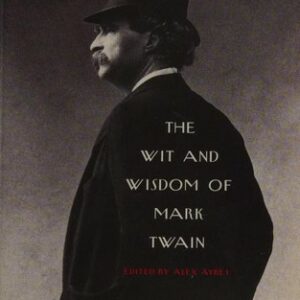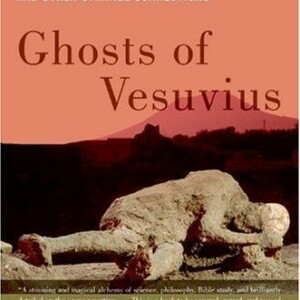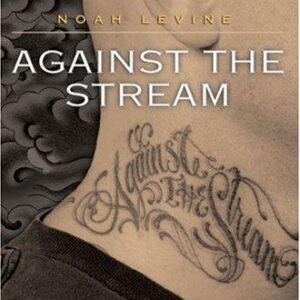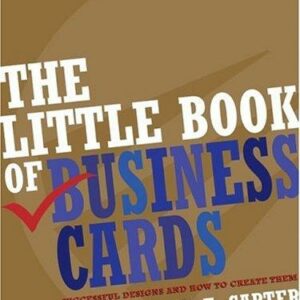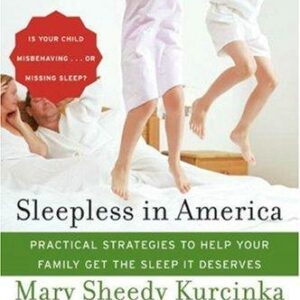Lift Up Thy Voice
$18.00
| Title | Range | Discount |
|---|---|---|
| Trade Discount | 5 + | 25% |
- Description
- Additional information
Description
In the late 1820s Sarah and Angelina Grimké traded their elite position as daughters of a prominent white slaveholding family in Charleston, South Carolina, for a life dedicated to abolitionism and advocacy of women’s rights in the North. After the Civil War, discovering that their late brother had had children with one of his slaves, the Grimké sisters helped to educate their nephews and gave them the means to start a new life in postbellum America. The nephews, Archibald and Francis, went on to become well-known African American activists in the burgeoning civil rights movement and the founding of the NAACP. Spanning 150 eventful years, this is an inspiring tale of a remarkable family that transformed itself and America.Lift Up Thy VoiceChronology
Major Characters
Prologue:
“. . . we defied the law of South Carolina”
PART ONE: THE GRIMKÉ SISTERS
One:
“They shall be your bondmen for ever . . . “
Two:
“. . . a stern and relentless God”
Three:
“He trod the pulpit like a giant . . . “
Four:
“. . . and blood flowed in streams”
Five:
“The ground on which you stand is holy ground . . . “
PART TWO: THE GRIMKÉ FAMILY
Six:
“. . . lift up thy voice like a trumpet . . . “
Seven:
“. . . we will go and work together”
Eight:
“We Abolition Women are turning the world upside down . . .”
Nine:
“. . . that great earthquake . . . “
Ten:
“. . . go on! go on! . . . “
PART THREE: THE GRIMKÉ BROTHERS
Eleven:
“Everyone was for himself . . . “
Twelve:
“. . . through the lonely dark . . . “
Thirteen:
“A cowardly and sinful silence . . . “
Fourteen:
“. . . the means which God uses to arouse the sleeping conscience”
Fifteen:
“You hang him to a tree . . . “
Epilogue:
“. . . the crisis has come . . . “
Author’s Notes
Acknowledgments
Notes
Bibliography
Index
* “A finely rendered portrait of two Southern abolitionist and civil-rights activists, and of the time in which they lived…. More than reporting the details of the Grimké sisters’ lives and deeds, interesting enough as they are, Perry offers a learned survey of American social history in the mid-19th century, providing a vivid account of the religious revival called the Second Great Awakening and connecting the quest of their contemporaries for earthly salvation to the sisters’ thwarted determination to lead lives of religious devotion…Engaging, intelligent, and likely to be of much interest to general readers, as well as of value in courses of American history, women’s studies, and African-American studies.—Kirkus, starred review
“The Grimkés’ personal struggles (the sisters’ search for religious fulfillment, the brothers’ pursuit of political satisfaction) and their published and unpublished works… hold the center to make this book eminently readable.”—Publishers Weekly
“We see in [the Grimkés’] troubles our own; in their triumphs our hope; and in their history, the history of our nation.”—LIFT UP THY VOICE, Prologue
Mark Perry’s books include Conceived in Liberty, a main selection of the History Book Club. An award-winning writer, he has written on history, the Middle East conflict, and American foreign policy for numerous magazines and newspapers.
PRAISE FOR MARK PERRY:
“Mark Perry…has made their dual biography the basis for an ambitious book, a history of the North and South from before the war to the end of Reconstruction. That he succeeds so well is remarkable.”
– The New York Times Book Review
“A thoughtful, moving, and wonderfully readable account of two valiant men, the war that brought them together, and the ideologies that ultimately kept them apart.”
– Cleveland Plain Dealer
Chapter One
“They shall be your bondmen for ever …”
There was nothing outwardly ostentatious about Charleston society. To primp and preen over their wealth, to lord their position over their “lessers,” or to condescend to snobbery—the province of the newly rich—would have never occurred to John Faucheraud Grimké or the other gentlemen sons of South Carolina’s great families. Such behavior would have been unseemly, undignified. White Charleston society was instead a world apart, a community of wealth, custom, and privilege built on the English model. Its oldest families, who were descended from the original settlers brought to the Carolinas from Britain in 1669 under the watchful eye of Lord Proprietor Sir Anthony Ashley-Cooper, had become the denizens of a new class of cotton, indigo, and rice wealth. Endowed with such a distinguished pedigree (their ancestors had been sent to the New World by their king, Charles II, himself), they affected what they believed to be the aristocratic manner of their British cousins. Their belief in their way of life, and in their right to live that life as they pleased, formed the central tenet of their faith.
Along the Ashley and Cooper rivers (which join, Charlestonians say, “to form the Atlantic Ocean”), the Pinckneys, Gaillards, Alstons, Draytons, Smiths, Laurenses, Lowndeses, Middletons, Hugers, Rutgerses, and Grimkés built homes with tall wooden doors and ornate black iron gates, behind which well-attired slaves served cool drinks or tended gardens that imitated those ofEngland’s noble estates. Everything about Charleston bespoke its standing as the South’s greatest city—if not in size, then in status and stature. By 1800, with a population of twenty thousand—a mere 150 years after its first one hundred families landed at the spit of land named Oyster Point—Charleston was the South’s premier port and America’s fourth-largest urban area. Its harbor was crowded with ships bound for Britain, France, the Northern states, and Africa. Charleston exported tobacco, rice, cotton, indigo, and lumber and imported textiles, furniture, and slaves.
A visitor to Charleston in 1800 would have been impressed by the city’s understated magnificence; it was as subtle and majestic as any midsize British town but without the seedy clutter. It was only a short carriage ride from the outskirts, down the tree-lined cobblestoned streets and past the homes of Charleston’s most affluent citizens, to the center of the city, which was located on a flat peninsula. There, Charleston’s banks, dry-goods stores, artisan shops, and law, municipal, and state offices were grouped along two dozen streets that led down to the city park, near the “battery.” Young men and women, courting, strolled each summer evening along the waterfront, often accompanied by servants. There were benches in the park, set among oak, maple, and cypress trees planted by the first settlers. If laughter was heard, it was restrained; the more boisterous voices, from the docks, were muted by the long row of offices on the southern side of the city center. On the other side of the city, separated from the affluent homes by a creek, a small group of middle- and lower-class homes jutted up against the modest post office. Nearby were the slave pens, to which men, women, and children from Africa were brought after being quarantined and before being sold to the wealthy planters and those in need of house servants.
One of Charleston’s best-known and best-appointed offices (in a nondescript brick building just two blocks from the slave pens) was managed by John Phillips and John Gardner, Rhode Island-born entrepreneurs who hired the captains and leased the ships that transported the slaves to Charleston. In just four short years, between 1803 (when Charleston reopened its overseas slave trade after a legislated hiatus that dated from the end of the American Revolution) and 1807 (when America’s international trade in slaves was stopped forever), the firm of Phillips & Gardner reaped a windfall in profits from its imports. In that period, nearly forty thousand Africans landed on Charleston’s shores, to be dispatched inland by wagon or sent north along the middle Atlantic coast aboard ships to their new masters. Charlestonians were careful in their trade. Arriving slaves were quarantined for ten days on Sullivan’s Island, outside Charleston Harbor, before being transferred to the slave pens. By 1810, the flood of overseas slaves had ended, but the effect was permanent: a majority of South Carolinians were now black, and parts of the state were so inundated by the trade that whites made up only a small portion of the population.
The large home of Judge John Faucheraud Grimké and his wife, Mary Smith Grimké, on Front Street, was a short drive from Saint Philip’s Church. When the services ended, the judge and his children, in separate carriages, would ride back to their home and receive guests, as was their Sunday custom. Sometimes, in the evening, the Grimkés would join other parishioners in a special prayer service, or else take part in an event at the central venue of Charleston’s civic life, the Old Exchange Building, which looked out over the harbor. The Old Exchange served as the setting for the city’s political activity, hosting a regular round of lectures, campaign speeches on patriotic or religious themes emphasizing “right thinking” and “correct morals,” and appropriately noncontroversial public discussions about local matters. The Grimké family spent other Sunday evenings calling on close friends at plantations along the Ashley River, northwest of the city, where the Middletons and Draytons had palatial homes. But even as a child, Sarah Grimké, the judge’s second daughter and sixth child, preferred teaching Sunday religious classes for slave children to making social visits with her family to Charleston’s elite. Sarah was a gifted teacher, though she was frustrated by the fact that she was forced to give her lessons verbally, since Charleston’s slaves were forbidden to learn how to read. More comfortable with children than with adults, the nervous young woman became an excellent storyteller. She was at ease with her young charges and believed that their innocence was God’s way of reflecting the original state of man.
Christmas, Easter, and Independence Day were the most important holidays in Charleston. For South Carolinians, July 4 was particularly special, and the city took great pride in its festivities. Charleston had suffered grievously during the American Revolution, when the British Army had imprisoned the sons of some of the city’s great families in the “dungeon” (preserved for posterity as a museum beneath the Old Exchange Building). On Independence Day, families from South Carolina’s up-country plantations would come to Charleston to enjoy the city fair and watch the fireworks that the municipal committee put on around the harbor. The citizenry relived the day when American troops had reoccupied Charleston after Washington’s stunning victory at Yorktown. Charlestonians and their up-country “cousins” spread their picnic blankets in the park and greeted old friends as children played and gawked at the soldiers of the South Carolina Militia, resplendent in their uniforms. The militia was the pride of Charleston, a permanent symbol of its contribution to the founding of the young Republic. But even as Charleston celebrated its independence, it took pride in vestigial evidence of its colonial past—streets, lined with trees and six-foot-wide brick walks, that were still named George and King.
The highlight of each July 4 came when Charleston’s families gathered in Battery Park to witness the firing of the set of cannons that looked out over the harbor. Just as they had once been fired to stave off Blackbeard, whose pirates had threatened the city in 1718, and the British invaders, whose ships had been spotted outside the harbor in 1780, so now they memorialized the birth of independence, sending their shells out into the middle distance, toward the walls of the fort that guarded the city. This seemingly impregnable gray eminence blocking Charleston Harbor was named for Thomas Sumter, a dashing Revolutionary War cavalryman and friend of John Grimké’s. Sumter and Francis Marion, another famous partisan, were the state’s premier heroes and, as the “Gamecock” and the “Swamp Fox,” the twin icons of its legendary struggle with royalty, having fought the British from their low-country lairs in a series of hit-and-run cavalry raids. Fort Sumter was as much a symbol of Charleston’s fighting spirit as the city’s homes were symbols of its elegance—and it seemed no less invincible than South Carolina society. Both would stand forever. When the firing of the militia’s artillery stopped, and the last of the shells had burst out over the fort, the applause of the onlookers rang into the night, and Charleston’s families turned for home, secure in their independence and confident in their future.
* * *
The Grimkés and others like them practiced an easy patriotism born of the certainty that no one, ever, could question their right to command the society that their ancestors had created. So assured were they in their position that in 1810, when Sarah Grimké was eighteen, the state legislature (called the House of Commons in a bow to English pretensions) passed legislation granting all white males the right to vote, well in advance of similar measures passed by legislatures in the rest of the country. The real reason for such liberalism was that in South Carolina, the right to vote meant little. Through a series of legislative sleights-of-hand, the administration of the state was firmly controlled by a small group of rich and influential low-country planters, a class to which John Grimké and his family belonged. The legislation merely ensured that the House of Commons would retain its monarchial privileges, claiming the right to appoint all the state’s judges, presidential electors, and officeholders, including the governor. The institution of slavery was jealously guarded by the House, since nearly all of its members owned slaves. South Carolina was the nation’s only true “slavocracy.”
South Carolina’s constitution was derived from a unique document of colonial history. “The Fundamental Constitutions of Carolina” was written by Lord Ashley with the help of his personal secretary John Locke. The aristocratic Locke was a learned but unpretentious empiricist Englishman who won immortality by helping to create that most breathtaking of all beliefs, the notion that the people had a right to choose their own government. The constitution drafted by Ashley and Locke was nonetheless at some remove from true republicanism: while it emphasized religious tolerance, which appealed to the French Huguenots (one of Charleston’s most prominent lineages), it also established an economic system that encouraged large land grants, which appealed to its English-descended gentry. (Locke, known for his suggestion that some revolutions were necessary, was much less revolutionary than Americans then believed: he held considerable stock in the Royal Africa Company, whose business was the slave trade.) South Carolina’s government elected legislators who institutionalized the status of South Carolina’s small but affluent nobility. Charleston’s citizens constantly celebrated their independence, their love of liberty, and their individual self-reliance, though in fact they were the least disposed to grant those same privileges to anyone else. Charleston was not a city of immigrants, of huddled masses, or of oppressed yearning to be free, nor was it destined to become one. After the initial influx of Huguenots and Englishmen, the town fathers had enacted strict citizenship laws that choked off the flow of new settlers (excepting slaves from Africa), even as they insisted that theirs was a friendly city that would welcome anyone.
For these reasons, Charleston was an anomaly, different not only from the rest of America but even from the rest of the South. During the crush of westward settlement that marked the opening of cotton lands following Eli Whitney’s invention of the cotton gin, in 1794, Charleston’s elite remained remarkably unaffected by the new South’s cotton wealth. Life went on as before, with the exception that those low-country planters who refused to cash in on cotton began to live on borrowed time and borrowed money. But if a handful of Charleston’s elite families started to lose their riches, they nevertheless retained their power in the state and city, and their status as South Carolina’s leading citizens. The silent, all-knowing, even self-deprecating style that the members of Charleston’s elite feigned in imitation of their London cousins stayed firmly in place; they were guaranteed their continued high standing by a system that was, as one aging and disenchanted Charlestonian would later bitterly reflect, “rocked in the cradle of wealth.”
Nothing intruded on this easy life. The national government was far away, and the state government solidly in the hands of the ruling class; even slavery itself, while an ever-present reality, seemed a distant concern. In truth, the heads of Charleston’s most affluent families had little contact with any but the most trusted of their slaves—those who cooked the family meals or raised the family’s children. Few heads of such families ever lowered themselves to the direct, day-to-day management of their plantations. That was left to overseers. Only on rare occasions, when their lives or livelihoods were threatened by precipitously falling profits or, even more unusually, rumors of a slave insurrection did Charleston’s ruling fathers intervene in the daily existence of their chattel property.
White women, the ruling matrons of Charleston society, had much more contact with slaves than their husbands, but that contact was of a particular kind. Although white women might be considered the “mistresses” of their domain, they were in fact as dependent on black domestic servants as their husbands were on overseers. House slaves invariably knew more about raising children and disciplining them than the Huger, Pinckney, Smith, or Grimké women, since such matters were left almost exclusively in their hands. So it was, on both counts, that the young male and female progeny of Charleston’s elite were planted and pruned to imitate this life-style, trained not as enterprising and creative innovators wedded to the idea of progress, but as “managers” of a status quo that was as fanatically defended as it was universally unquestioned.
In the early 1800s, the Grimké family grew and prospered. John Faucheraud Grimké was as talented and innovative a businessman as had been his paternal grandfather, the silversmith John Paul Grimké. Originally from Alsace-Lorraine and German by birth, the first American Grimké had spoken with a German accent and added an é to his name, giving it a French cast. His decision to change the family name, if only slightly, was intended to appeal to the sensibilities of Charleston’s most important families, who would not have taken well, he believed, to a name that sounded as German as Grimk. Grandfather Grimké’s silver business became one of the most successful in the South, and his products rivaled those crafted by that other famous American silversmith, Paul Revere. Charleston’s first families rewarded him handsomely for his unique silver designs and his superior craftsmanship, enabling him to build a jewelry business in the city and to purchase land in the low country to the south. He recovered from a fire that burned his store in 1740 (aided by a loan from Henry Laurens, one of Charleston’s most respected civic leaders) and then helped the city fathers rebuild after the devastating hurricane of 1754. John Paul Grimké added to the family holdings and dabbled in the cotton business. He proudly viewed himself as a patriot and was one of the original members of Charleston’s Sons of Liberty during the American Revolution. Ambitious, intelligent, and prudent, John Paul Grimké was one of the city’s most respected citizens. His grandson John Faucheraud Grimké emulated him.
* * *
Sarah Grimké admired her father. From an early age she viewed him as the arbiter of her personal morals and the touchstone of her inner strength. She prized the calm propriety with which he approached every crisis. The scion of a most proper Southern family, the grandson of an American patriot, and a descendant of the highly respected Faucherauds, Judge Grimké was a legendary figure even in his youth. As a young man he excelled at his studies, was sent to England to read the law, and took his degree at Oxford. He practiced in London and kept rooms in the Temple. He was a brilliant lawyer and political thinker. In 1774 he was asked by Benjamin Franklin and Thomas Pinckney to join them in signing a petition addressed to King George III, protesting the Boston Port Bill. He proudly agreed to their request and thereafter was viewed as one of the nation’s first revolutionaries. Great things were expected of John Grimké.
Grimké had been cutting a wide swath through British society, but when the American Revolution overtook the colonies, he returned to Charleston, where he raised and trained a company of cavalry. Commissioned as a captain in the Revolutionary Army, he was imprisoned by the British for his disloyalty, then released. Avoiding the loyalist forces, he slipped out of Charleston and joined the army of General Robert Howe. He served as deputy adjutant for South Carolina and Georgia, fought with distinction at the Battle of Eutaw Springs, and then was sent north, where, as a young lieutenant colonel, he witnessed the surrender of Lord Cornwallis’s army at Yorktown. He came home from the Revolution a military hero, an accomplished lawyer, a friend of the famous Marquis de Lafayette, and a cosmopolitan political thinker. The war was over, the colonies were free, and a new nation was being born. John Faucheraud Grimké was just twenty-six years old.
Grimké quickly ascended to the top rank of Charleston lawyers. In political circles, his name was regularly mentioned for statewide office. As was his habit then and throughout his life, Grimké ignored the attention, built his law practice, and diligently added to his family holdings. He purchased lots in Charleston, small parcels in the rice country, and land adjoining his family’s up-country plantation in the Union District. Called Belmont, this larger cotton plantation in the Appalachian foothills was the jewel in the Grimké family crown. Grimké understood that in the agriculturally fueled mercantilist economy of Charleston, land was the most stable currency and would serve as the best insurance against the wild swings in prices for lowland rice and labor-intensive cotton. He watched over his land carefully and extended his holdings whenever he could. He was a shrewd businessman and investor and was respected for his sound financial dealings.
In 1779, at the age of thirty, John Grimké was appointed to a judgeship and named as a delegate to the state convention that had been called to debate ratification of the U.S. Constitution. Grimké was a conservative who supported state power, but as a veteran officer of the Revolutionary War, he stood with George Washington (whom he greatly admired) and Alexander Hamilton in favor of the Constitution. Like many other South Carolinians, he welcomed the advent of a strong central government, but only after receiving assurances that the smaller states, especially Southern ones such as South Carolina, would be able to retain their unique institutions and traditions. He served with distinction at the ratifying convention and proudly celebrated South Carolina’s entry into the new Union.
John Grimké married well, in 1784. Mary Smith was the great granddaughter of the second Landgrave of South Carolina. A Smith ancestor had saved Charleston from Blackbeard’s pirates soon after the town was first settled, and Mary’s father, “Banker Smith of Broad Street,” was the city’s leading financier and its wealthiest citizen. Their line mixed English nobility with Scottish rebels, plantation aristocrats with colonial governors, hardy pioneers with sober patriots. Along with the Draytons, Middletons, and Rhetts, the Smiths dominated Charleston society and South Carolina’s political establishment. Robert Barnwell Rhett, Mary Smith’s distant nephew (who actually changed his family’s surname from Smith in order to be “more Southern”), later became South Carolina’s leading voice for secession and an outspoken advocate of “Southern nationalism.” Mary Smith Grimke, called Polly by her friends and family, was twelve years younger than her husband but every bit the proper Charleston lady. She was a small woman who spoke often and with animation. With her sharp-edged intensity, strong opinions, and deep religious faith, she was a perfect match for the self-effacing, scholarly Judge John Grimké.
The newly married couple’s home was one of the most admired in Charleston. Two winding staircases led up to the massive four-story town house. The first story was set aside for the kitchen, the second for Judge Grimké’s offices. The family entertained guests on the third floor and lived on the fourth. To the rear were the slave quarters, which housed cooks, servants, housekeepers, butlers, footmen, seamstresses, laundresses, and parlor maids. The rooms were large and high-ceilinged. Judge Grimké’s books were everywhere, lining the wails of his office and wails in the living quarters. Although formal dressers, dining tables, and desks were often imported from England, the family furnished much of the house locally, keeping a nearby furniture-maker busy mimicking the styles of London.
US
Additional information
| Weight | 12.4 oz |
|---|---|
| Dimensions | 0.9200 × 5.2200 × 7.9600 in |
| Imprint | |
| ISBN-13 | |
| Author | |
| Audience | |
| BISAC | |
| Subjects | history gifts, autobiography, teachers, biographies, autobiographies, us history, American history books, biographies of famous people, sociology books, world history, black history books, african american books, gifts for history buffs, historical books, history teacher gifts, black history books for adults, vanguard, American, gift, black lives matter, for, african american, american history, biography, gifts, SOC001000, history, Sociology, black history, african american history, BIO002000, appreciation, civil rights, history books |
| Format |




